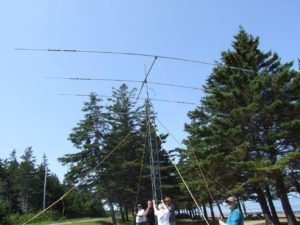Hello everyone,
Winter Field Day will take place this upcoming weekend, and once again the Annapolis Valley Amateur Radio Club will participate!
As described on the WFD web page, the purpose of Winter Field Day is “to foster Ham camaraderie, field operation, emergency operating preparedness, and just plain on the air, outdoor fun in the midst of winter for American, Canadian and DX Amateurs”. Disasters don’t always happen in the summer, and as providers of emergency communications capabilities, Amateurs need to be ready.
Last year, AVARC was the top station in the world in its category, and we intend to defend that placement. Don’t worry about freezing in a tent however! We will operate in the “Home” category, using my station. In recognition of the emergency preparedness aspect of the event however, we will power the equipment with a generator.
Winter Field Day will start at 1500 (3 PM) Saturday 28 January, and will finish up at 1500 the next day. All modes are permissible, so we need voice, CW and digital operators. If you would like to take part in the event, or simply want to drop by to see how Amateur Radio works, please contact me and I’ll fit you into the operating schedule.
This is a low intensity, relaxed contest, so there is no need to feel intimidated. I’ll have snacks and refreshments for those who drop by.
73
Al
VO1NO / VA1AVR

